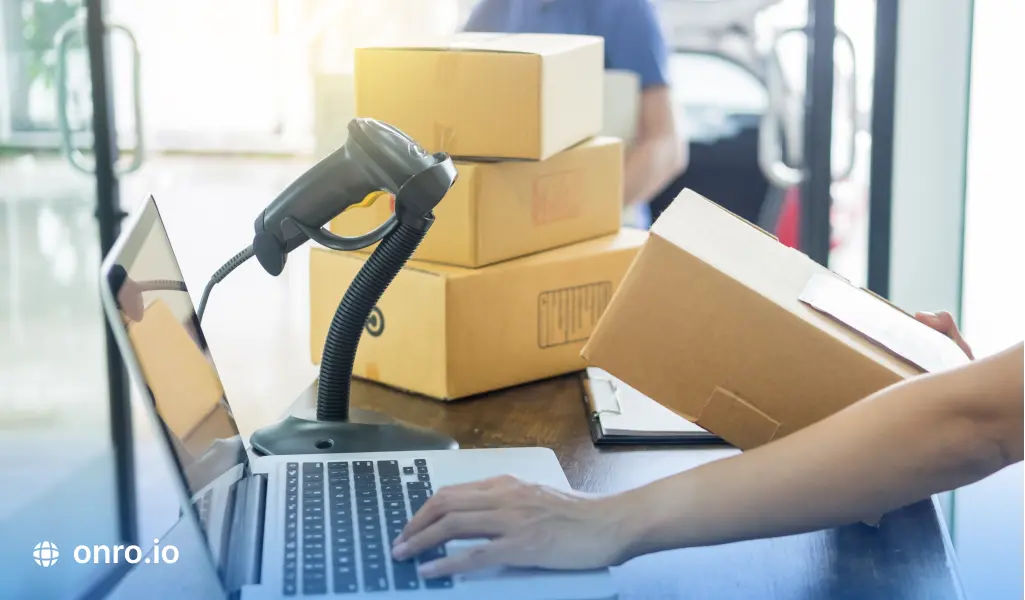The delivery services industry is among the markets that experienced a significant boom due to the Covid-19 pandemic. The thriving ecommerce sector and the surge in online shopping have led to an increased demand for goods transportation. As an important segment of the delivery industry, starting a courier company in these conditions is a bright idea. In this article, you will learn how to start a courier business. If you are in search of reliable courier software to streamline your operations, you’ve come to the right place.
In the figure below, you can observe the growth of this market over the recent years:
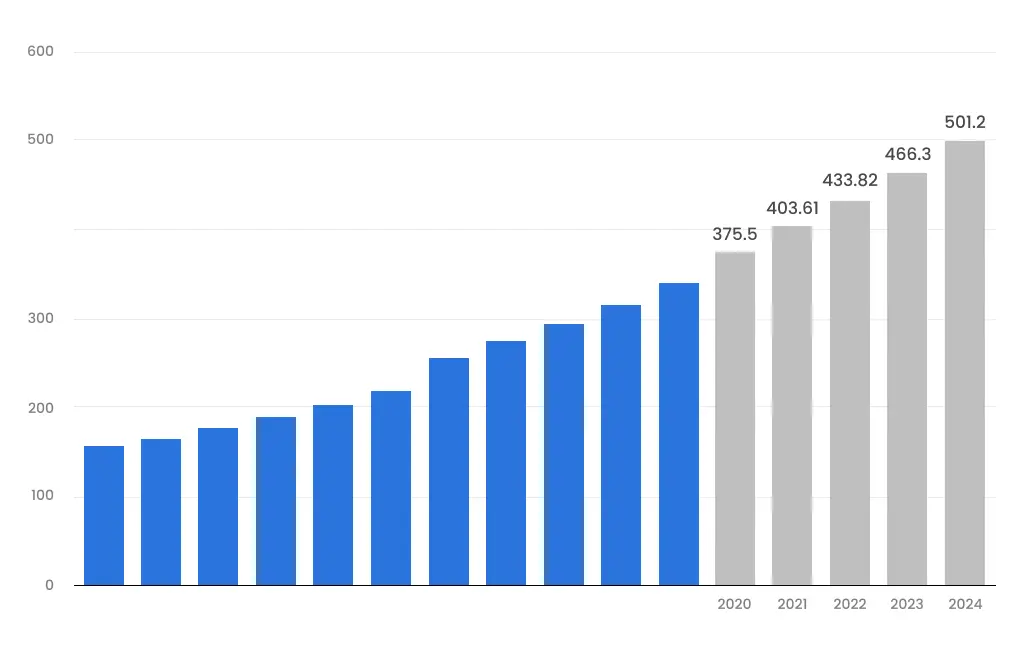
In this article, we try to examine the aspects of starting a courier business and give you a comprehensive view. If you are unfamiliar with courier services, it is better to read this article first: what is a courier service.
Content
Who Can Use this Article?
This article caters to two specific groups:
Firstly, those who have the intention of launching a courier business but have not yet taken the plunge. This article provides a comprehensive understanding of the courier service industry and delves into essential concepts of this business.
Secondly, it addresses existing courier companies that are looking to enhance their operations and boost their profits.
Whether you are considering to start a courier business or you are already a part of this industry, we invite you to join us on this insightful journey.
If you’re in search of software but uncertain about the selection process, consider visiting our blog post that guides you on how to choose software for courier service.
Select Your Target Market to Start a Courier Business

To start courier business, it’s crucial to have a clear understanding of your potential customer base. Customers can be broadly categorized into two groups: individuals and businesses. Depending on these categories, a courier company can fall into one of the following two types:
B2B (Business-to-Business): This involves catering to other businesses. In this scenario, your clients are organizations such as restaurants, groceries, pharmacies, and more.
B2C (Business-to-Consumer): Here, your courier services are tailored for individual customers.
Contrary to popular belief, the demand for courier services from individuals is generally lower compared to that from businesses. Courier services don’t typically witness the same high-frequency demand seen in taxi or ride-hailing services.
It’s important to note that the need for delivery services spans across almost all industries. However, attempting to cover the entire market right from the start might not be feasible, unless you possess substantial financial resources that can be allocated to operations and building an initial large team, comprising drivers and operators.
Thus, it becomes imperative to thoroughly understand the market and then strategically select one or more segments to target. In the following sections, we will introduce some of these potential segments.
Restaurants and Catering
These businesses have to deliver lots of food packages every day, and many of them prefer to hire a specialized courier company for this task. This decision brings several benefits, such as making sure deliveries arrive on time, improving the quality of service, and increasing overall productivity. When they work with a dedicated delivery service, they can avoid dealing with the challenges of managing drivers and courier logistics. This allows them to focus more on their main operations. Also, offering a special express service is essential for handling the urgent delivery demands of restaurants and catering. This targeted approach positions your courier business as a valuable partner in their success, tapping into a steady and demanding market. To start courier service, you can deal with some of restaurants and caterings.
Online Stores
Online stores are the main customers of courier companies. Each online shop process has been delivered, but Online shops prefer outsourcing delivery service and focus on the main operation. Online stores are used to same-day and next-day courier services cause they are cheaper and faster.
Supermarkets and Groceries
Grocery stores have become a substantial customer base for courier companies. Catering to these companies involves offering services that are tailored to the various purchase types and customer preferences, with options ranging from on-demand to same-day deliveries.
Medical Services
You have the opportunity to offer comprehensive courier services catering to medical suppliers and various businesses within the healthcare industry. While engaging with certain clients in this sector, you might find it necessary to invest in specialized facilities for medical courier services. If you’re keen on delving deeper into this topic, we invite you to explore our blog post about how to start a medical courier business.
Other Courier Business Customers
Apart from the sectors mentioned earlier, there are numerous other businesses with a regular need for delivery services. These encompass laundry services, banks, government organizations, florists, and pharmacies. The potential customer pool for a courier company is wide-ranging and diverse. This versatility provides you with the chance to launch focused marketing efforts for each segment, effectively catering to their unique requirements and preferences.
Specify Type of Service to Start a Courier Business

The choice of activity area (geographically) and the types of courier services that can be provided by the company are varied. Each of these services needs its own equipment, pricing, facilities, and marketing methods.
On-Demand: As soon as the order is received The package will be picked up and the driver will deliver it. This service is the fastest available service and is provided locally (in a city or an urban area). It is expensive because it provides a driver and equipment. There is no need to hub or warehouse In this type of service.
Same-day: The package that is picked up and delivered on the same day. Usually, the package must be received before noon. If a package is received in the afternoon, it will be delivered to the recipient tomorrow. Service doesn’t provide long-distance and it works locally. The cost of this method is less than on-demand due to the aggregation and distribution model.
Next-day: It is similar to same-day, but the package is delivered the day after pick up. In this case, the cost is usually lower than the same-day. In next-day and same-day methods, the company needs to have a hub (or warehouse) to store packages.
Feel free to visit our blog post to gain insight into the essential features that are crucial for all logistics companies.
Analyze your Courier Competitors
Analysis of your competitors is an important factor of the determinants of the market status. Create a list of active courier businesses in all fields.
- Company title and website address
- Services (list of services that they offer)
- Pricing and rates
- Activity zone
- Target market
- Type of vehicles
- Number of vehicles
- Duration of activity
The list should be similar to this table. This table will need to be updated. It is necessary to document the studies you do.
| Title | Services | Rates | Market | Vehicles Type | Website |
|---|---|---|---|---|---|
| Courier A | Same-day | Distance | Restaurants E-Commerce | Van Car Bike | cou-a.com |
| Courier B | On-demand | Distance + Time | Groceries | Bike | cou-b.com |
| Courier C | Same-day On-demand Next-day | Weight + Size | Individuals Caterings Pharmacies | Van | cou-c.com |
Design Brand, Logo, and Identity to Start Courier Business
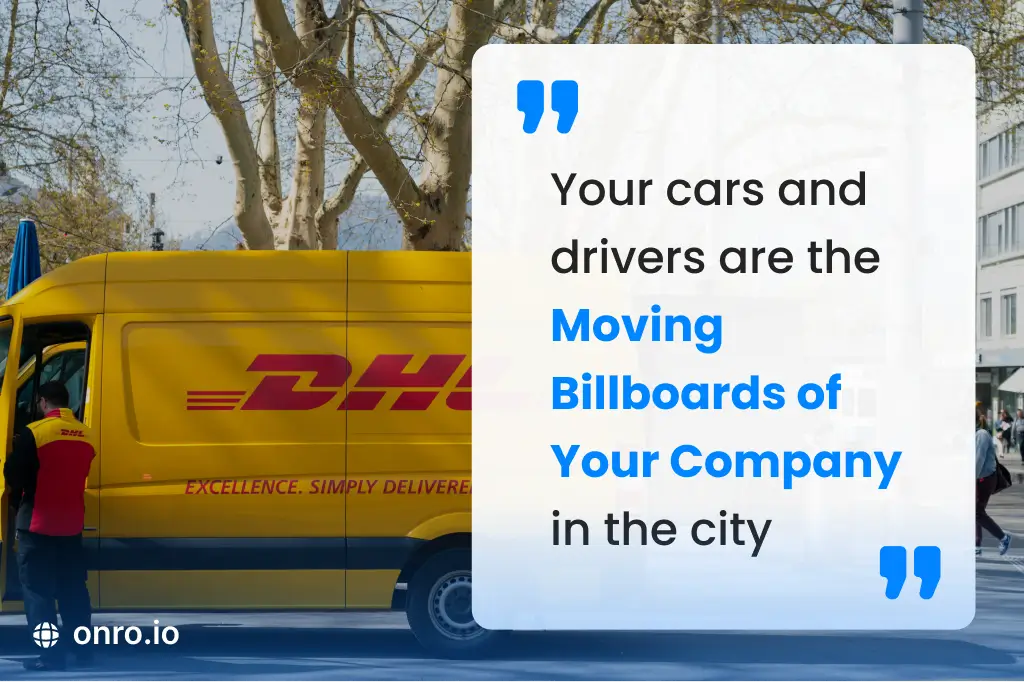
Be careful when choosing the name, brand, logo, and color of your company. Your cars and drivers are the moving billboards of your company in the city. Unique color, logo, and organizational slogan are the best advertisement for your courier company. In addition, They will create your unique identity in the audience’s minds.
This item can be used in the branding process:
- Drivers’ uniforms
- Boxes of motors
- Car stickers
- Envelopes and packages
- Website
Drivers and Vehicles to Start Courier business
Vehicles and drivers are two related items. Before you start a courier business, you should know drivers can be hired in two ways:
Employee
Company provides equipment and vehicles, hires drivers, and pays a wage. Fuel, maintenance, and repairs costs are the responsibility of the company. Sometimes, to motivate drivers, the company pays them more in the form of order commissions. This method is usually used for same-day companies because it has a predicted delivery volume and requires drivers in certain shifts. These drivers are also called internal drivers. Drivers normally have to accept and do the orders. To start courier service, you can start with hiring drivers.
Freelancer
In this method, drivers work with their cars for the company. As a driver, you decide how much and which hours you drive. This method is mostly used by companies that provide on-demand services. The company’s financial model is a percentage, which means the company deducts a percentage of orders fee as revenue.
Start Courier Business Legally
Your company needs to have the appropriate legal structure. You accept any type of packages which may contain anything, expensive or cheap, flammable or dangerous, so you must secure your courier business and check the legal cases to need.
The Main Costs of Starting a Courier Service
In this section, we will be discussing about the cost of starting a courier business. There are a lot of variables that can affect the cost of starting and running a courier business:
- Your location (Cost varies by location).
- The type of service you provide.
- The number of employees you have.
- Rent of office.
- Equipment (Office facilities, Cars, etc.).
- Fuel and maintenance for vehicles (If you want to have your fleet).
- Advertisement.
If you’re looking to start courier service in your area, it’s best to contact local courier businesses in the industry and ask them about their costs for similar services.
Advertisement

Increasing revenue and profit are the goals of any company. It is important to create a marketing plan and perform work that will entice new customers. Among the marketing strategies that each company utilizes, there are two major ones, and both help one another, but each demands its particular approach. We’ve talked about how to get courier contracts in another article separately. You can read it for more information.
In another article, we’ve discussed Useful Courier Advertising Ideas which helps you increase your customers. Also, to strengthen your customer base, you can benefit from the potential of the courier software tools.
Specify your Pricing Structure and Rates
The main factor to motivate customers to buy is the right price. you should optimize your pricing. To determine the pricing, first, you need to specify the type and scope of your service.
The main price factors are as follows:
- Distance between origin and destination
- Route time (this factor is usually considered next to the distance to apply traffic)
- Package weight
- Package dimensions
- Vehicle type such as motor, van, passenger, which is usually used in on-demand services
- Tax
To move a product from point A to point B customers pay the cost, in addition to this main service, courier company can receive a fee for other services:
- Relocation assistant
- Package and goods insurance
- Packaging service
- Cash On Delivery
It will be good if you think about additional services that you can offer when you are thinking about how to start a courier business.

Table is showing the pricing of one of the courier companies.
Your pricing and profit and loss statement can be changed depending on the feedback you get.
One of the pricing methods is based on zone. That means the courier company’s service area is divided into several zones and fixed pricing will be considered between these zones.
Here is an example:
| ZONE A | ZONE B | ZONE C | |
| ZONE A | $10 | $15 | $30 |
| ZONE B | $15 | $10 | $25 |
| ZONE C | $30 | $25 | $10 |
Track your Couriers and Vehicles
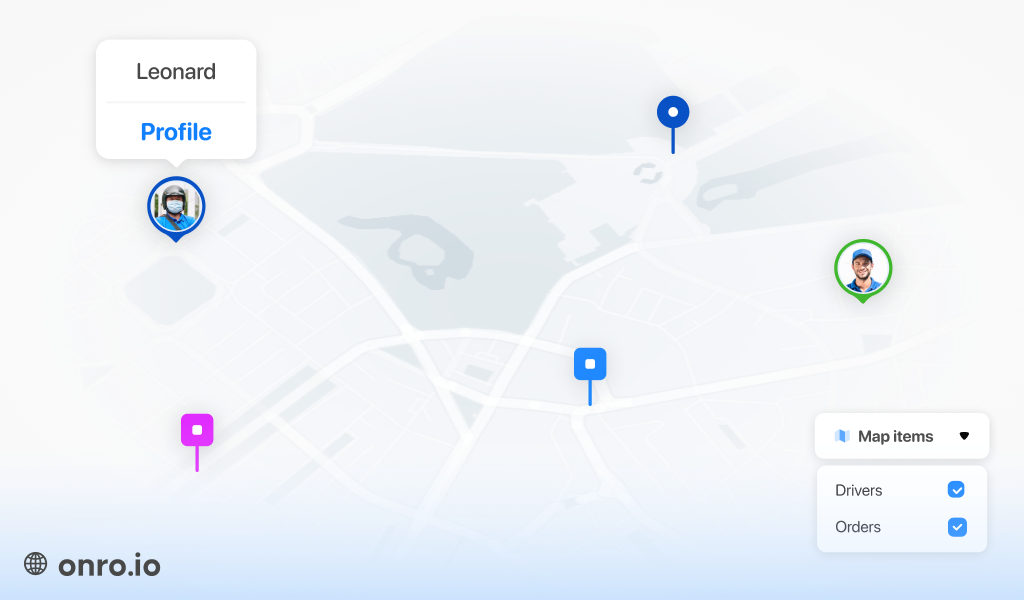
You need to find your driver on the map at each moment. Customers, both sender and receiver need to know the driver’s location and receive time. The traditional way is buying GPS devices and installing them on vehicles. This method is accurate but you should buy a GPS device for each vehicle that it has too much cost.
Driver’s smart phone can be accurate GPS. All you need to start courier business is a courier management software to collect, view and analyze the driver’s route and location.
Collect the Proof of Delivery (POD)
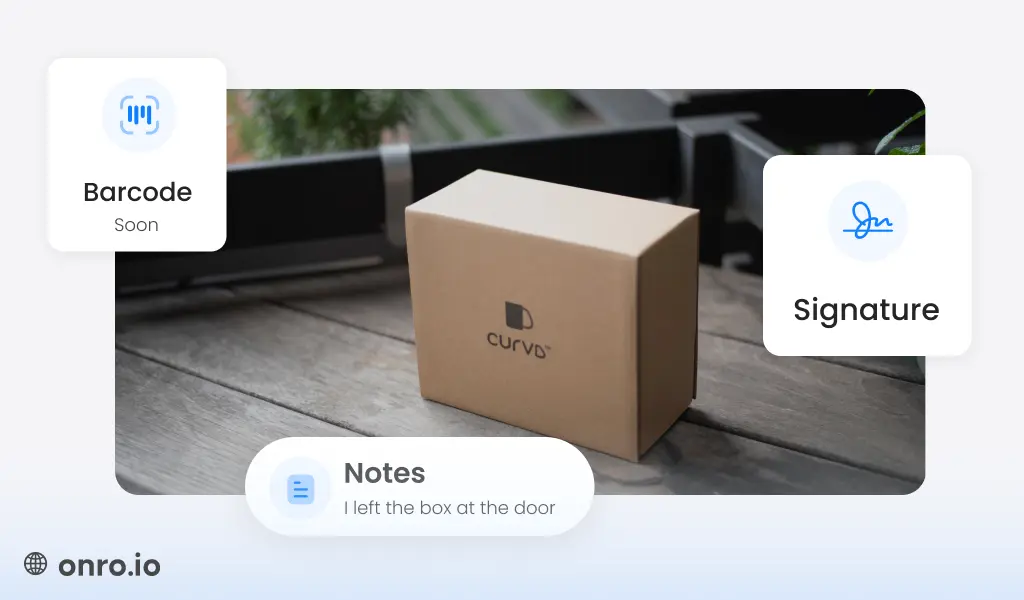
It means that when the driver delivers the package, he/she will get proofs that show he delivered the package safely to the right person. POD can be one of the followings:
- Package photo in the recipient’s hands
- Recipient signature on the driver app screen
- Photo of the delivery receipt signed by the recipient
- Photo of the package at the place of delivery (ex. behind the door)
There is a need for proof of delivery in some orders, which unlike in the past, when special hardware devices were used to receive signatures, now mobile application can be used to receive photos, signatures, and text.
Conclusion
Achieving a successful courier business is difficult, but you can lead it properly if you know enough about that business. Here were some points to help you get started or improve your courier business. If you desire, you can start delivery business with our services today.
If you’re in search of courier software, you can click the button below to obtain a free demo of our courier software.
Try Onro for Free
Get your free access to the Onro Fully White-label Courier Software.
Originally published July 7, 2021 11:12:00 AM, updated Thursday, 28 August 2023.













